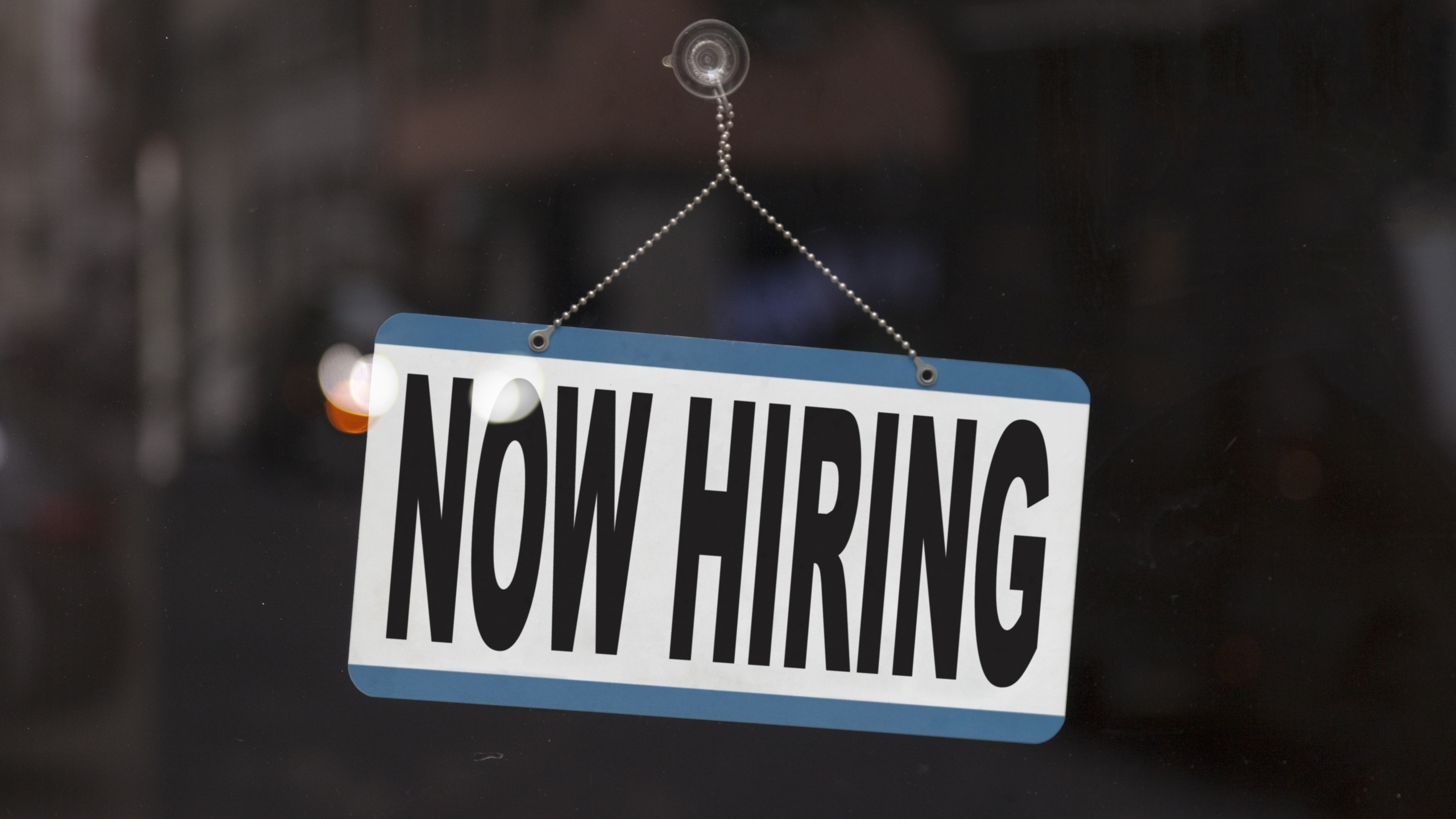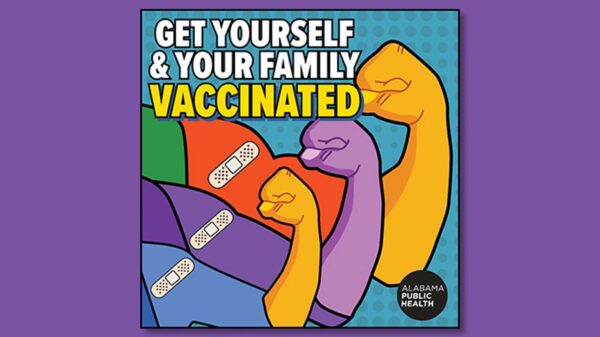NFIB State Director Rosemary Elebash says a new survey by the NFIB Research Center shows that inflation and staffing are making it difficult for many small businesses to fully recover from the economic slump caused by the COVID-19 pandemic.
“Staffing for skilled and entry-level positions continue to create issues for business owners here in Alabama and across the country,” Elebash said. “Inflation and supply chain issues are driving up the cost of doing business and forcing small businesses to raise prices.
“Our members are hopeful things will continue to improve, but they’re realists,” she said. “They think they’ll be dealing with inflation, staffing, and everything else for many months to come.”
The NFIB Research Center’s latest COVID-19 survey assesses the impact the COVID-19 pandemic has had on small businesses onationwide. This is the 23rd survey in the series and includes updates on the economy, sales levels, and supply chain disruptions. The survey was conducted from December 8-12 with 456 responses collected.
“The small business economy is recovering from the pandemic, but they continue to manage other economic headwinds,” said Holly Wade, executive director of the NFIB Research Center. “With historic inflation, ongoing staffing shortages, and supply chain disruptions, owners are working hard to get back to pre-crisis economic levels.”
Key findings include:
Sales levels
- Just over one-third (36 percent) of small businesses are at or exceeding pre-crisis sales levels, only one percentage point higher than in March 2022.
- Thirty-four percent of small businesses are back or nearly back to where they were with sales 75 percent – 99 percent of pre-crisis levels with another 20 percent at sales levels of 50 percent – 74 percent pre-crisis.
- Sales levels are less than 50 percent of pre-crisis levels for 11 percent of small businesses.
The economy
- Most small business owners reported that their local economy remains below pre-crisis levels of economic activity.
- Almost one-third (31 percent) of owners reported that economic conditions are back to normal now in their area, up from 24 percent in March.
- Fourteen percent of owners anticipate an economic recovery by the end of the first half of 2023. Over half (55 percent) of small business owners are less optimistic and expect conditions not to fully improve until the second half of 2023 or later.
Supply chain disruptions
- When asked if supply chain disruptions are impacting their business, 36 percent of owners reported a significant impact, 15 percentage points below March 2022.
- Another 38 percent of owners reported a moderate impact on their business and 20 percent reported a mild impact on their business. Six percent of owners reported supply chain disruptions are not an issue.
- Seventy-eight percent of owners experiencing supply chain disruptions reported that the disruption caused lost sales opportunities to some degree. Only 18 percent of owners report no lost sales opportunities.
- Almost half (49 percent) of owners reported that supply chain disruptions are causing significant or moderate lost sales opportunities.
- Twenty-two percent of small business owners experiencing supply chain disruptions reported that the disruption is worse now than it was six months ago.
- A little over half (53 percent) reported about the same level of disruption and 23 percent reported better than six months ago.
- The vast majority of owners (86 percent) anticipate the supply chain disruption that is impacting their business to continue for five months or more.
Staffing shortages
- Twenty percent of small employers are currently experiencing a significant staffing shortage and another 25 percent are currently experiencing a moderate shortage.
- Of those small employers currently experiencing a staffing shortage, 20 percent are experiencing a significant loss of sales opportunities and almost one-third (32 percent) reported a moderate loss of sales opportunities because of the shortage.
- Two-thirds of small employers reported that their current staffing shortage is about the same as it was three months ago. About one-quarter (24 percent) of small employers reported it being worse and only 8 percent reported their current staffing shortage is better than it was three months ago.
- When asked what adjustments, beyond normal hiring practices, small employers have taken to attract applicants for open positions, 72 percent reported increasing wages, 13 percentage points below March. Twenty-nine percent increased paid time off and another 16 percent offered or enhanced hiring bonuses. Twenty-one percent of small employers offered or enhanced referral bonuses and another 21 percent offered or enhanced health insurance benefits.
- When asked what adjustments have been made in business operations to compensate for the staffing shortage, one-third of small employers experiencing a staffing shortage are offering more hours to part-time employees. Half of small employers are offering overtime to full-time employees. Seventy-eight percent of small employers responded that the owner(s) are working more hours. Thirty-four percent of owners have resorted to more drastic measures with adjusting business operation hours. Thirty-two percent of small employers have introduced new technology to enhance productivity and 29 percent have reduced the variety of goods and services sold.
- Almost half (49 percent) of small employers experienced employee absenteeism related to COVID-19.
- Nearly all (93 percent) of small business owners reported that they did not experience staffing issues related to employees with long COVID symptoms.
Prices
- Almost half (46 percent) of small business owners have increased their average selling prices specifically because of supplies and inventory inflation.
- Seven percent of owners reported they increased their average selling prices specifically due to higher compensation related to staffing shortages.
- Of those who raised prices, 42 percent have raised prices by 10 percent or more, another 27 percent have raised prices 5 percent – 9.9 percent. Eighteen percent have raised prices 1 percent – 4.9 percent and another 10 percent by less than 1 percent.
Interest rates
- Asked how higher interest rates are impacting their business, one-third reported that consumer spending has slowed due to rate increases. Another 21 percent reported that business financing payments are more expensive and 6 percent said credit and loans are harder to get. Forty-one percent reported that higher interest rates have had no significant impact on their business.
Employer Retention Tax Credit (ERTC)
- Almost one-quarter (23 percent) of small employers are very familiar with the ERTC, a 10-percentage point increase from March. Another 43 percent of small employers are moderately or somewhat familiar. Slightly over one-third (34 percent) of small employers are not at all familiar with the ERTC.
- Twenty-three percent of small employers claimed the ERTC for wages in 2020. Another 17 percent of small employers claimed the ERTC for wages in 2021.
- Just over half (57 percent) of small employers have received the credit.
- Twelve percent received the credit by withholding payroll taxes and 45 percent received it after retroactively submitting 941X form.
- Thirty-five percent of small employers who filed retroactively reported that it took up to six months to receive the credit. Another 9 percent reported 7 – 10 months and 6 percent reported 11 or more months. Of those who filed retroactively, 30 percent of them are still waiting to receive the credit from the IRS.
Paid leave
- Twenty-three percent of small employers offer paid family leave. For those who offer paid family leave, 69 percent offer 1 – 2 weeks, and 20 percent offer 3 – 4 weeks. Another 5 percent offer 5-8 weeks and 3 percent offer more than 8 weeks.
- Just over half (51 percent) of small business owners offer paid sick leave. Sixty-six percent offer 1 – 5 days and another 29 percent offer 6 – 15 days. Six percent of owners offer more than 15 days.
- For those small business owners who do not offer paid sick leave or paid family leave benefits, 36 percent reported it was because they can’t afford to offer these benefits.
- Twenty-two percent reported it was because they were not profitable enough to offer them at the moment. Another 12 percent of owners who do not offer paid sick leave or paid family leave benefits reported it was because they do not view these benefits as necessary to attract employees and 3 percent because the administration of benefits is too time-consuming and/or confusing.
- Twenty-two percent of small business owners have heard of the “Employer Credit for Paid Family and Medical Leave.” Of those who have heard of it, the overwhelming majority (89 percent)have not taken the credit on any employee wages paid for family or medical leave.
Payments
- Over three-quarters (77 percent) of owners do not sell their products or services online. Thirteen percent sell products online, 6 percent sell services, and 4 percent sell both products and services.
- Of those who do sell their products and services online, 28 percent of them report that their online sales are 1 – 25 percent higher than pre-COVID levels, and 14 percent report that they are 26 – 50 percent higher than pre-COVID levels. Seventeen percent report that they are 51 – 75 percent higher and 40 percent report more than 75 percent.
- Seventy-nine percent of small employers accept cash as a form of payment. Twenty-one percent use only electronic payments, online or at the company.
- While most small businesses accept cash as a form of payment, about three-quarters (76 percent) of them report that cash accounts for 25 percent or less of their total sales. Another 15 percent report that cash accounts for 26 percent – 50 percent of total sales and 9 percent report more than half.
- When asked how they process their company’s payroll, 47 percent of small employers reported processing it in-house. Thirty-eight percent use a full-service payroll provider and 15 percent an outside accountant/bookkeeper.
- Seventy-seven percent of owners have a business website. Almost half (47 percent) of owners had an outside company or individual initially design their business’s website. Thirty-one percent reported that an owner or employee within the business initially designed their website and another 22 percent reported that it was a collaborative effort. Forty-seven percent of owners reported that an owner or employee within the business primarily maintains and updates their business’s website and another 47 percent reported an outside company or individual. Twenty-three percent of owners reported that their website takes online payments.
This publication marks NFIB’s 23rd Small Business COVID-19 survey assessing the health crisis impact on small business operations, economic conditions, and utilization of the targeted small business loan programs. The first series was published in early March 2020. The full survey of the 23rd edition is available here.

















































